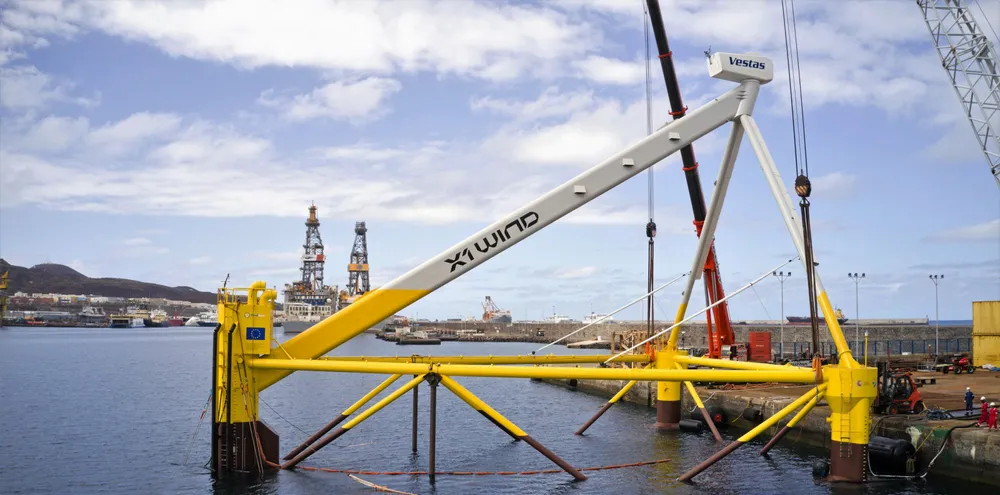'Clear trajectory': pioneering downwind floating wind flagship readies for Atlantic trials
X1Wind's innovative PivotBuoy design will be tested off Spain's Canary Islands at 1:3 scale en route to us in planned lead-off 15-30MW industrial arrays

The part-scale prototype of floating wind pioneer X1Wind’s PivotBuoy concept is afloat off the Spanish island of Gran Canaria awaiting installation in the Atlantic Ocean, as plans for development of a first full-size array using the next-generation design take shape.
“This is a significant step forward for X1 Wind, preparing the way to demonstrate how our innovative technology can deliver dramatic cost savings and firmly position floating wind as a competitive green energy resource,” he said.
“We have a clear trajectory with funding secured to design and certify our technology at full-scale. This will allow us to move swiftly in the short term through the pre-commercial phase.”
To be moored in some 50 metres of water at the Plocan R&D centre, the flagship PivotBuoy, a modular tension leg platform with single point mooring system that allows the structure to ‘weathervane’ to harness the wind stream, will fly a 225kW Vestas V29 turbine adapted to a downwind orientation.
The 1:3 prototype was fabricated in nine parts by Santander, Spain-based contractor Degima, with the elements shipped to Gran Canaria for assembly at the Hidramar shipyard in Las Palmas.
“Throughout the process we were able to mobilise and engage local supply chains, which is a key feature of our future fabrication and deployment plan for full-scale units,” stated CTO Carlos Casanovas.
“Local manufacturing, assembly and load out supports the development of local economies and job creation in the offshore wind sector, while also avoiding long transit times and saving costs and carbon emissions for future projects.”
Raventos stated: “A big part of this project, building a part-scale [version of the PivotBuoy], was about learning as much as possible about scaling up for the full-scale” units which X1Wind sees ultimately being upsized to 15MW X140 models that can be fabricated a rate of one-a-week and towed out for operation in water depths of 500 metres-plus.
The PivotBuoy in one a number of new-look floating wind concepts heading for market that have placed the accent on engineering for manufacturability and serial deployment as well as power production optimisation. X1Wind expects its design to “substantially reduce” the levellised cost of energy (LCOE) of deepwater wind, currently over €100/MWh.
“Importantly, our floating wind technology offers a lighter design requiring less steel - which also reduces carbon emissions during fabrication -and requires a significantly smaller footprint on the ocean floor when compared to catenary systems,” said X1Wind, in a statement.
Blades for the prototype will be bolted on “soon” with portside testing of all subsystems to be completed “over the coming weeks”, before the unit is installed offshore and connected via a dynamic 20kV cable for commissioning.
The pan-European Pivotbuoy consortium includes companies EDP, DNV, IntecSea, ESM and Degima and research centres WavEC, Plocan and DTU.